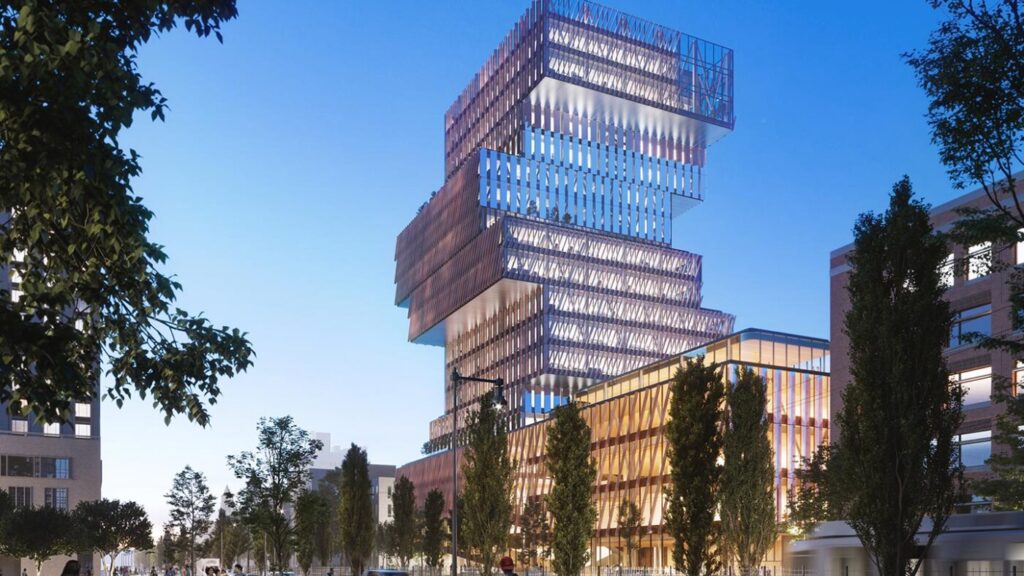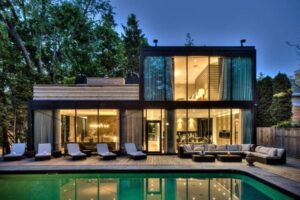Imagine a group of friends gathered around a table, eyes wide, breaths held, as one carefully slides a block out of a tall, precarious tower. The silence is palpable, each second dragging on as gravity seems to defy logic. This is Jenga at its peak—both a game and a mesmerizing lesson in physics and architecture. But what if this game wasn’t just about stacking wooden blocks? What if it inspired an actual method of constructing buildings? Welcome to the fascinating world of Jenga-inspired architecture.
The Origins of Jenga
Jenga, derived from the Swahili word for “to build,” was invented by Leslie Scott in the early 1980s. It gained rapid popularity due to its simple rules yet complex strategies. Since then, the concept of Jenga has evolved from a simple party game to an inspiration for modern architecture. But what exactly does it mean when architects talk about the “Jenga Building”?
Jenga Building in Modern Architecture
Jenga-inspired buildings are characterized by a stack-like design where individual sections, or “blocks,” appear as if they were pulled out and rearranged, much like in the game itself. These structures are visually striking, breaking the traditional monotony of city skylines.
Iconic Examples of Jenga Architecture:
- 56 Leonard Street, New York City: Also known as the “Jenga Tower,” this 821-foot-tall residential skyscraper designed by the Swiss architecture firm Herzog & de Meuron is perhaps the most famous example. Each of its 145 condominiums looks as if it is precariously balanced atop the other, much like the wooden blocks in a game of Jenga.
- MahaNakhon Tower, Bangkok: With its pixelated, spiraling design, this skyscraper offers a modern twist on the Jenga concept. Designed by German architect Ole Scheeren, it stands at 1,031 feet and once held the title of the tallest building in Thailand.
Why Jenga Buildings?
The concept of Jenga buildings goes beyond aesthetics. It is a deliberate architectural choice that maximizes functionality, space, and natural light. Each “block” or section can serve a different purpose, from luxury residences to offices or green terraces.
Benefits of Jenga-Inspired Design:
- Unique Aesthetics: The staggered block arrangement stands out in a sea of uniform high-rises.
- Structural Integrity: While these buildings look delicate, they are feats of modern engineering designed to withstand wind forces and seismic activity.
- Sustainability: The design often allows for more outdoor space and better natural light, contributing to energy efficiency.
The Science Behind It
Creating a Jenga-like skyscraper isn’t just about stacking blocks randomly. It requires precise engineering and understanding of gravity, wind shear, and load distribution.
Engineering Challenges:
- Load Distribution: Each block must be carefully balanced to distribute the load evenly throughout the structure.
- Wind Resistance: High-rise buildings face significant wind loads. Jenga buildings are engineered with flexible yet robust frameworks to withstand such stresses.
- Seismic Safety: Many Jenga-inspired buildings are found in areas prone to earthquakes. Advanced materials and innovative damping systems ensure they remain secure during seismic events.
According to a report from [source], modern skyscrapers designed with staggered or pixelated facades reduce wind force impacts by up to 30% compared to traditional flat-sided buildings. This makes them not just unique to look at but safer as well.
The Popularity of Jenga Architecture
The rise of Jenga-style buildings can be traced back to the early 2010s when architects began experimenting with non-linear designs. According to the Council on Tall Buildings and Urban Habitat, by 2020, over 50 major projects featured a Jenga-inspired design.
Statistics:
- 56 Leonard Street: Sold out its luxury condos at prices ranging from $3.5 million to $47 million each.
- MahaNakhon Tower: Achieved 90% occupancy within the first year of opening, highlighting the demand for unique architectural residences.
- A study from ArchDaily found that buildings with staggered facades saw a 15% increase in occupancy rates due to their aesthetic appeal and functional design.
The Future of Jenga Architecture
Architects seek innovative ways to optimize space as urban areas grow while creating visually appealing structures. Jenga buildings may be the answer. The integration of green spaces and adaptable, multi-purpose sections are likely trends to emerge as this architectural style evolves.
Conclusion: More Than Just a Game
What began as a simple game to challenge friends and family has inspired modern architecture. Jenga buildings redefine city skylines and challenge engineers and architects to push the boundaries of design and safety. So, the next time you pull a block from a Jenga tower, consider the structures standing tall in your city that owe their existence to the suspense-filled game you hold in your hands.






